17,500 inhabitants, 33 modules, 4.5km long, 3.1km high.
Earth Date: 6:47 a.m. Wednesday January 17, 2142
Venusian date: 4:30 p.m. Croday 45 advanae 61
Location: atmosphere of Venus, 55km above the surface, approaching Babakine, Atmospheric coordinates: 0 ° N, 18 ° E
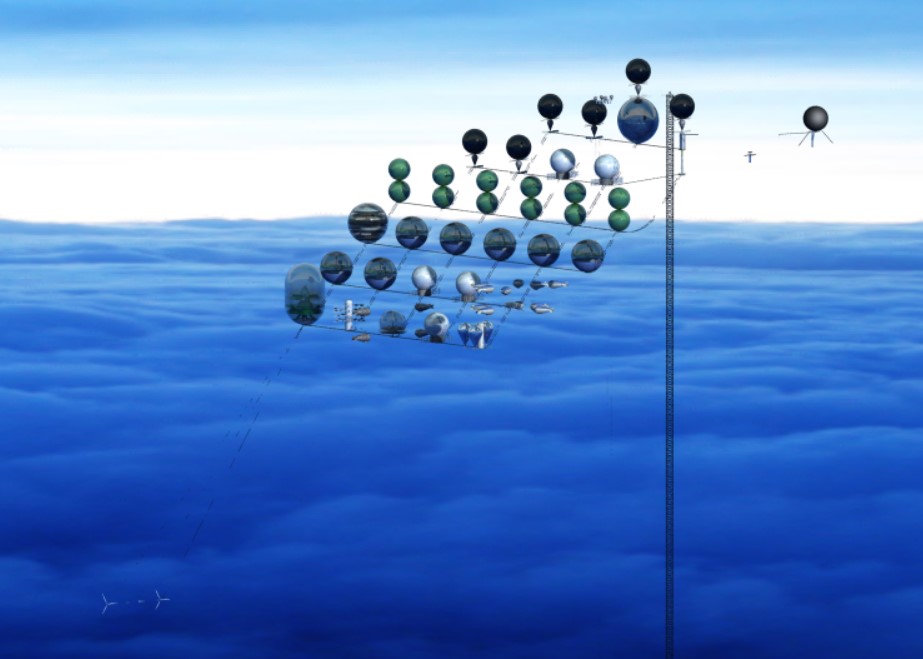

General plan
After 4 hours of flying through the ever-changing cloud of sulfuric acid, Anna, who sits in the seat behind you, pats you on the shoulder and suggests you look out the window. As you emerge from a patch of fog, you see the Babakine colony for the first time in real life.
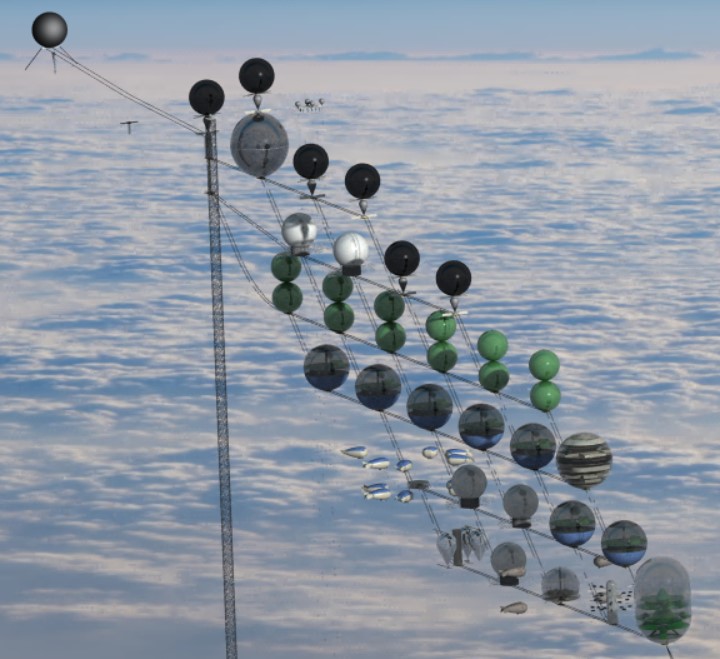
Babakine is made up of about thirty huge spherical modules / balloons 300m in diameter. They are filled with breathable air (nitrogen + oxygen) less dense than the CO2 atmosphere of Venus. It is therefore a gas carrying like helium in the earth’s atmosphere. The modules are therefore particularly bulky because it plays both the role of living space and a bearing balloon, allowing the base to maintain its altitude. In view of the small pressure and temperature difference between the inside and the outside of the balloon and the absence of risk of meteorite impact, the walls are extremely thin and flexible. It’s big space and the transparency of the walls is the opposite of the bunkers you had known on the moon.
For the general plan, the modules are placed on a vertical grid along an east-west axis. This shape is due to the use of winds to prevent the different elements from colliding. Wind speeds from east to west increase with altitude, so a modulus placed higher will go faster than a modulus lower. Linking its two modules with a cable, it is placed diagonally, one at the top in the west, the other at the bottom in the east. They remain united but are pulled in opposite directions which prevents them from colliding.
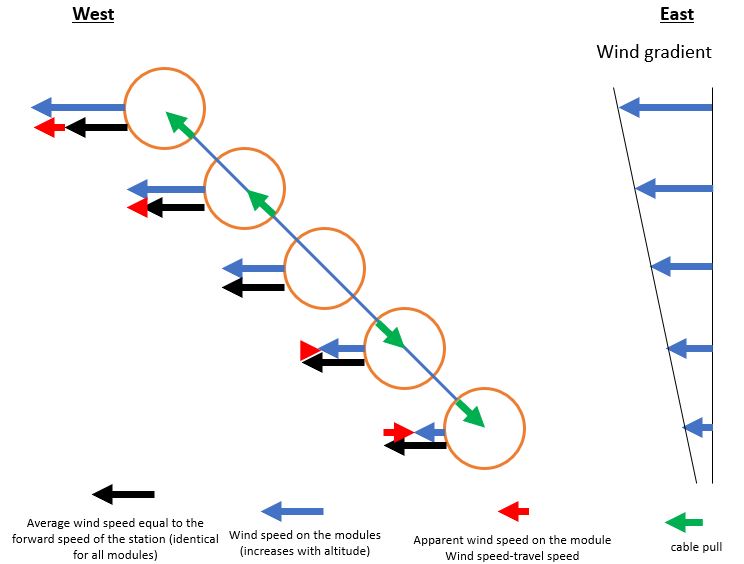
It is possible to extend this diagonal with half a dozen modules but beyond that it would be too long. The solution is to place several diagonals in parallel, slightly offset. The end result is what you saw in front of you, a huge diamond several kilometers long.
As you get closer you see the variety of modules that make up the colony. Even if you already have a general idea, Anna suggests that you show them around when you arrive. Moreover, the arrival is imminent, the mooring arm begins to rotate as the plane’s last turn takes it out of the window. Even if you don’t see much of the maneuver, landing at a Venusian airport has little to do with landing on land. The plane begins to circle the airport, passing through an open area in the settlement. While you can easily feel the sensation of increased gravity from the centrifugal force of the turn, it is not a problem compared to what you experienced in the starship. After a few seconds you hear a mechanical noise coming from the cabin ceiling indicating that you have been grabbed by the airport arm. The arm / plane assembly begins to slow down, lowering the perceived gravity. After some maneuver, the plane is in its housing and you can get off to access the hall.
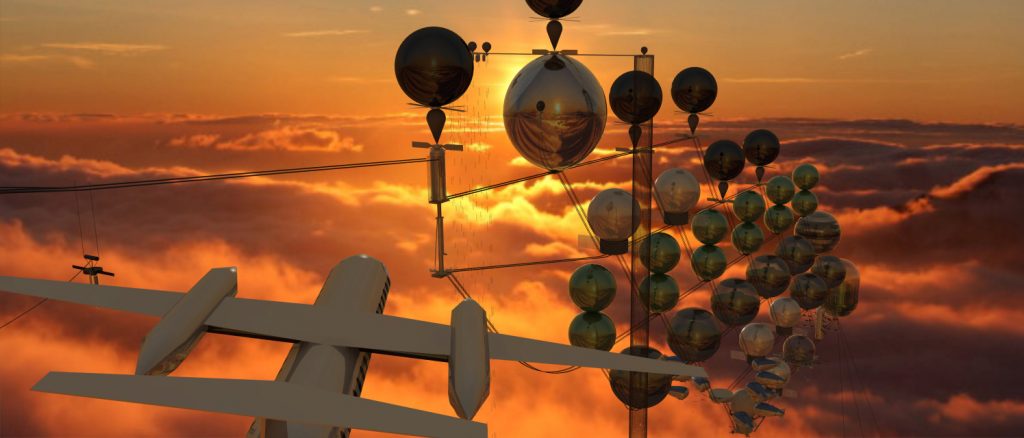
Inter-module transport
The first thing you need to do when you get off the plane is to collect your ID badge from a counter in the lobby. Your badge will serve as a means of payment, access to the restricted area for your work, and above all to enter your apartment. Besides, you learn that you have been allocated accommodation in the Nang khiaw module named after a small village in Laos. Indeed, the founders of the Babakine station found it amusing to name the housing modules with the names of small villages in each land country. The name of the module does not prejudge the atmosphere that reigns there. In fact, to promote diversity and to avoid groupings by land nationality, we avoid assigning someone accommodation in a housing unit in a village in their country of origin. Moreover, the counter clerk sells you the “night” life of Nang khiaw with his “roof top”. As you know the first dwellings are allotted quite arbitrarily the time you discover the colony, if you were disappointed you could ask for another one in a module that suits you better.
The counter clerk also gives you plans for the inter-module transport system. Transportation is provided by subway trains which run on the cables connecting the modules and which also carry water and electricity. The rear of the trains is always made up of a folding seat allowing it to be easily converted into freight transport. Metro lines placed on horizontal cables are numbered 1 to 6 with line 1 at the top and 6 at the bottom. The lines following the diagonal cables are named by letter from WEST to EAST. This grid also allows you to quickly locate the modules with for example the airport where you were in 2A (second horizontal from the top and first diagonal from the west) while Nang khiaw is in 5F (fifth and penultimate line starting from the top and 6th and last diagonal starting from the west).
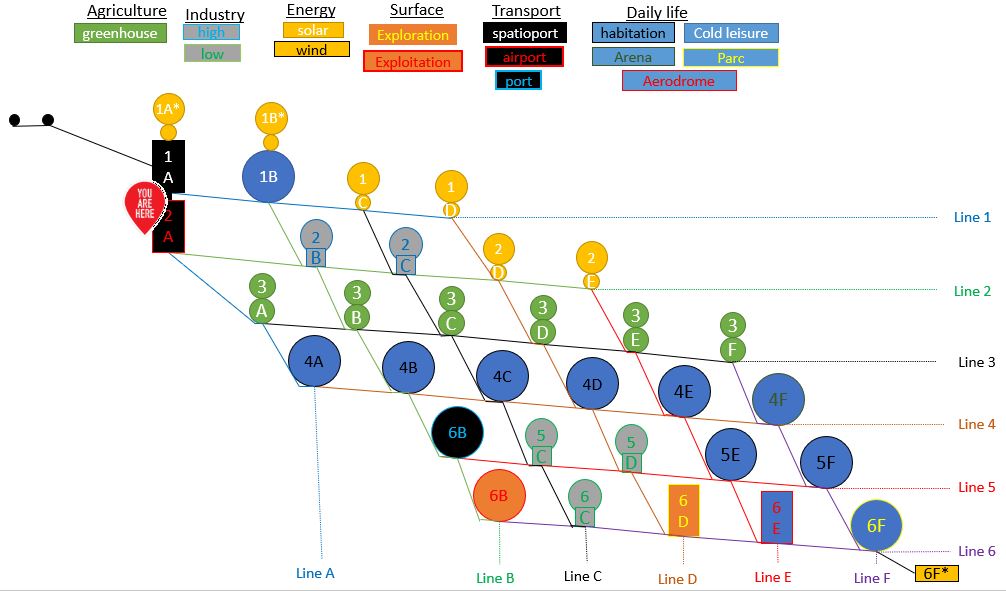
Anna is waiting for you and a small group again for a quick tour of the colony. This begins in the elevator connecting the airport and the spaceport. Since the modules are often over 300m high, an internal transport network is required in addition to the inter-module transport subways. For architectural reasons, the internal networks of the airport and the spaceport are common and you stop at the metro station located between the two modules. This station is simply made up of a platform closed by automatic doors that seals against the metro doors to prevent outside air from entering the modules. You board the first metro line 1 at the start.
Energy modules (1A*, 1B*, 1C, 1D, 2D, 2E, 6F *)
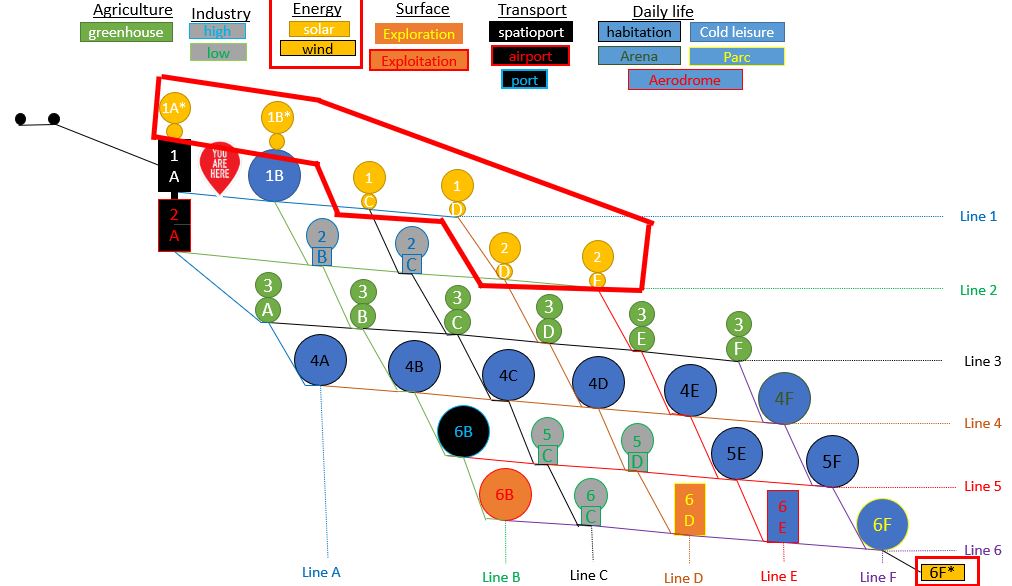
When you get halfway between two modules, Anna asks you to look over the spaceport (A1). There is an energy module as above most of the diagonals. This position at the top of the colony is due to the need to maximize their lighting, have a cold wind for cooling and support the other modules below thanks to their significant lift.
The top of these modules consists of a balloon about a hundred meters in diameter, the walls of which are transparent from the outside but reflect from the inside. Since the light does not come out of the balloon, it appears as black. The energy thus concentrated makes it possible to produce the bulk of the electricity consumed by the colony.
But as the colonies revolve above the equator, they spend about 30 hours in total darkness and the solar power plant becomes ineffective. So you need an energy storage system that’s made up of a balloon that’s half-inflated right now. It scavenges sulfuric acid from the atmosphere, breaking it down into water and sulfur trioxide with excess heat from the solar power plant. The water is then separated into oxygen and hydrogen which fills the balloon as the day goes on. At night, these two components are recombined in a fuel cell to provide electricity. This also has the effect of deflating the balloon. Since the balloon varies in volume, this could change the lift and therefore cause the base to rise or fall. To avoid this, during electrolysis some of the sulfur trioxide is stored in the bottom of the balloon to make it heavier and compensate for the increased lift. Sulfur trioxide is released as the balloon deflates.
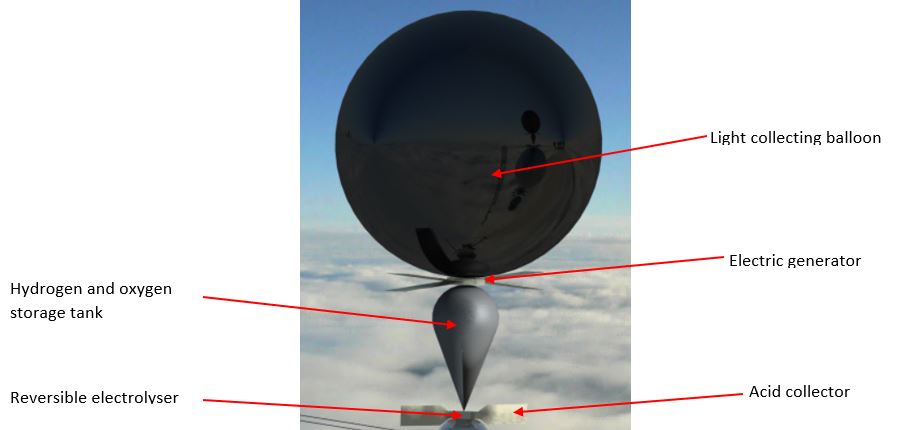
In order to ensure the security of the power supply, a set of wind turbines are placed below the EAST end of the base. They use the difference in wind speed between the colony and the lower layers of the atmosphere which due to their high density makes wind turbines more efficient.
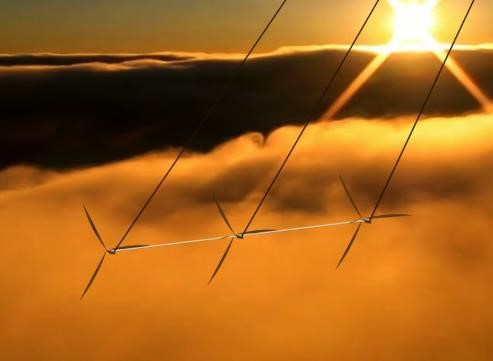
Wind energy module